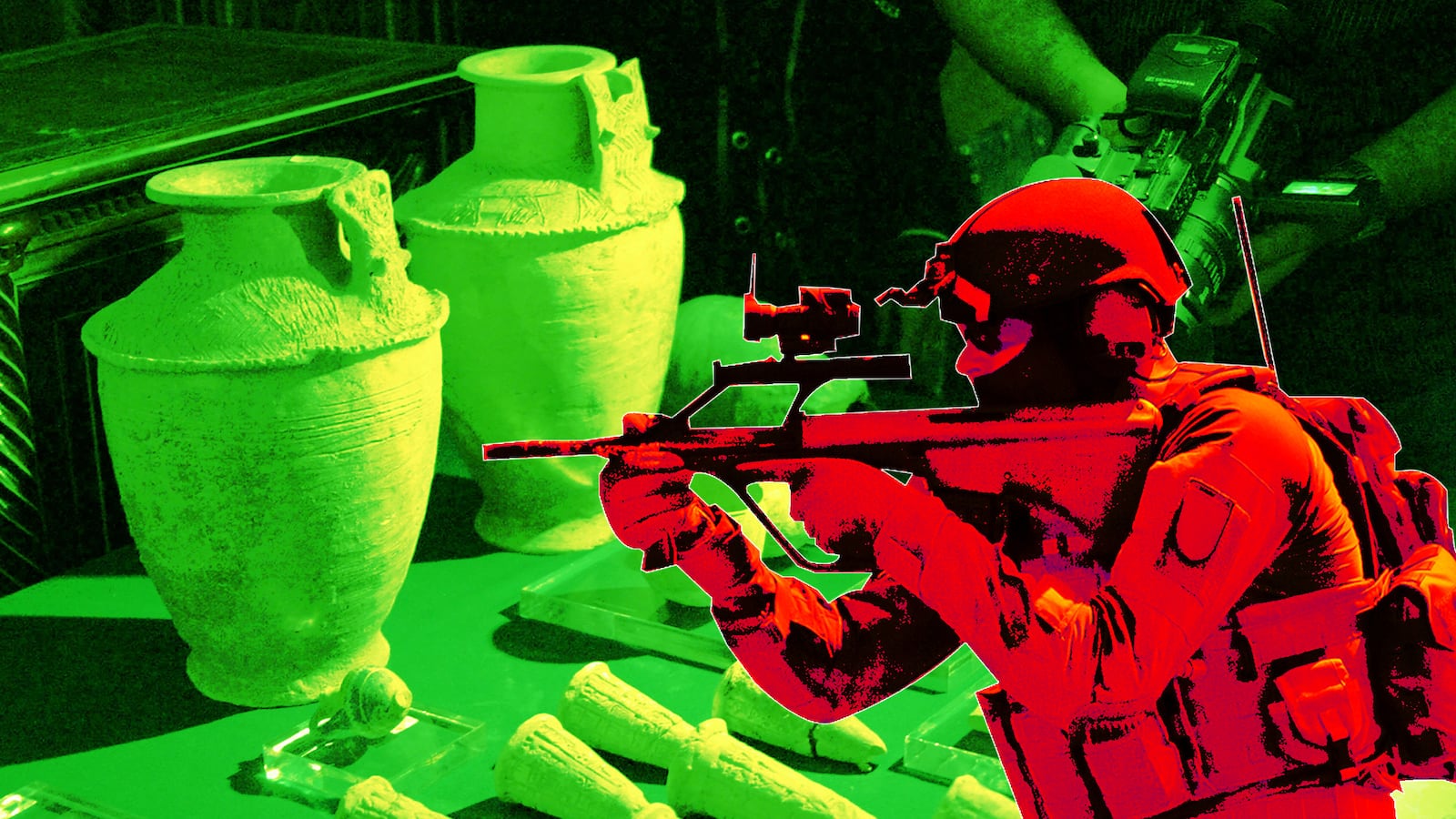On an almost moonless night last May, U.S. Special Operations Forces hit the Syrian compound of a man known as Abu Sayyaf.
He had been called the chief financial officer of the self-proclaimed Islamic State, the “emir of oil and gas,” overseeing what amounted in 2014 and early 2015 to some $1 billion in smuggling, extortion, and “taxation” revenues for the criminal empire widely known as ISIS.
“The mission was all about gathering intelligence,” a U.S. official told The Daily Beast at the time. And not the least important source of that intel, after Abu Sayyaf died in the fracas, was his widow, who’s been held indefinitely in U.S. custody in Iraq.

What was not made public until now, however, was the extent to which a treasure trove of ancient artifacts found with Abu Sayyaf also contained vital clues that could help break open ISIS looting and smuggling operations. Thousands of archeological sites dating back to the days of the Bible have been laid waste.
At a symposium on “Conflict Antiquities” held at New York’s Metropolitan Museum on Tuesday, Deputy Assistant Secretary of State Andrew Keller presented newly declassified evidence collected by the American commandoes who took out Abu Sayyaf.
The special ops guys found extraordinary bits of sculpture, gold jewelry, and coins—like some treasure hoarded by Ali Baba. The artifacts, which were turned over to the National Museum of Iraq in Baghdad on July 15, were exquisitely portable. Perfect for smuggling with minimum risk and maximum profit.
But, more importantly, the special forces also found records kept by the ISIS bureaucracy. As with many tyrannical regimes, in the would-be “caliphate” the apparatchiks are careful to document their work. So there were receipts for the taxes collected from looters—$265,000 worth, on artifacts with a value ISIS estimated at more than $1.3 million. There were edicts threatening punishment for those looting antiquities without permission, and there were licenses for those permitted to pillage.
Yet for all the drama surrounding Keller’s announcement, and all the promise it seemed to hold, it’s not clear that any of the leads have born fruit. No official at the symposium was able to cite a single prosecution growing out of the intelligence gathered by the Special Operations Forces that night in May. “Most of that is classified stuff,” the FBI’s Maxwell Marker told The Daily Beast during a break in the symposium.
Indeed, while the looting and smuggling exist on a vast scale, by all accounts, not one looter, smuggler, middleman, money launderer, or buyer connected with the ISIS operations anywhere has been prosecuted by the United States, and if any have been arrested, U.S. officials are not saying. “I can’t comment on ongoing investigations,” Marker said.

In fact the whole message of the symposium was that the agents of the FBI, Immigration and Customs Enforcement (ICE), the Department of Justice, the State Department, and the United Nations are making slow progress or none with their investigations, and thus are pleading with museum curators, collectors, and other people in the private sector to help them out.
To that end, the State Department’s Robert A. Hartung announced that the “Rewards for Justice” program would pay up to $5 million for “information leading to the significant disruption” of antiquities trafficking that benefits ISIS.




